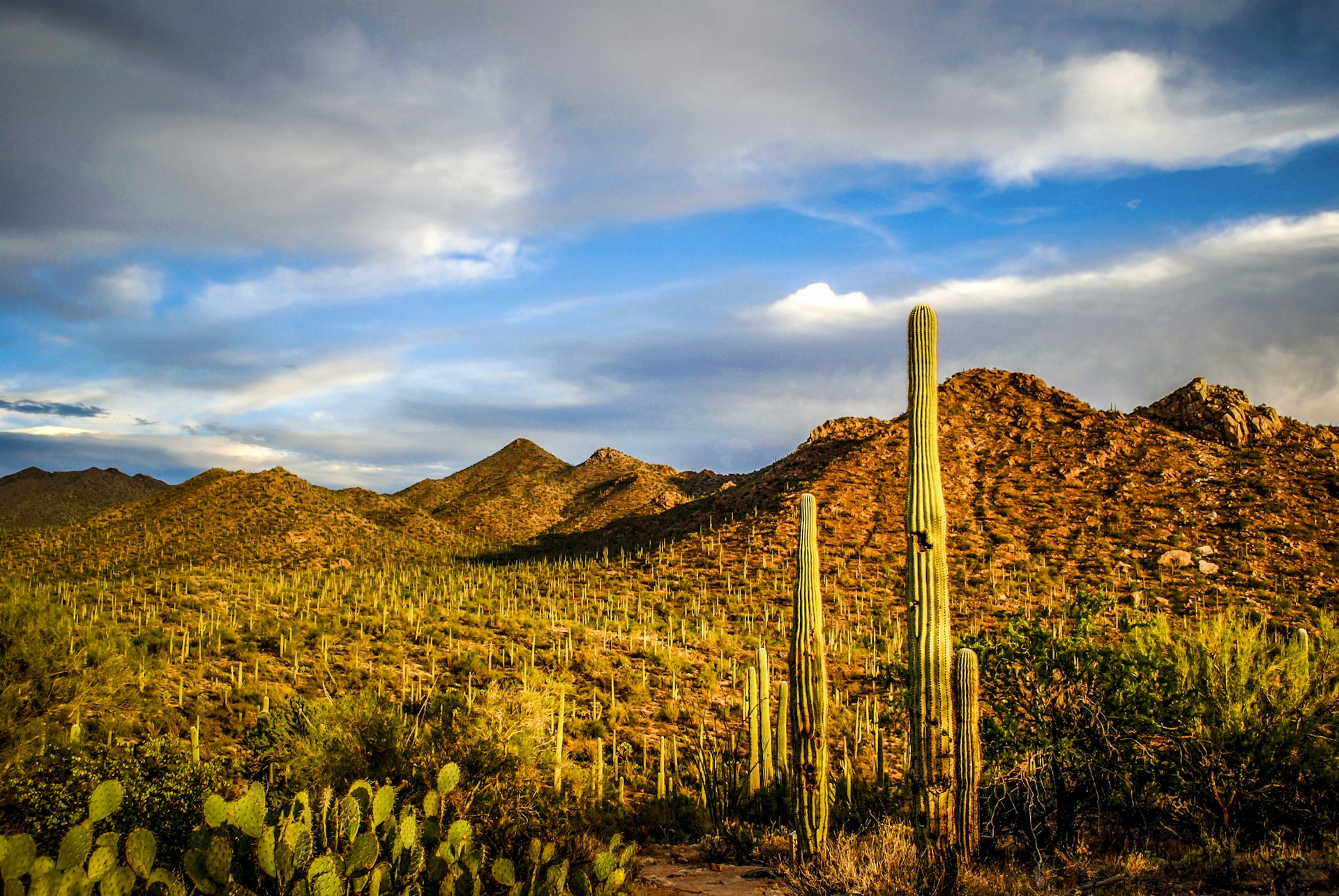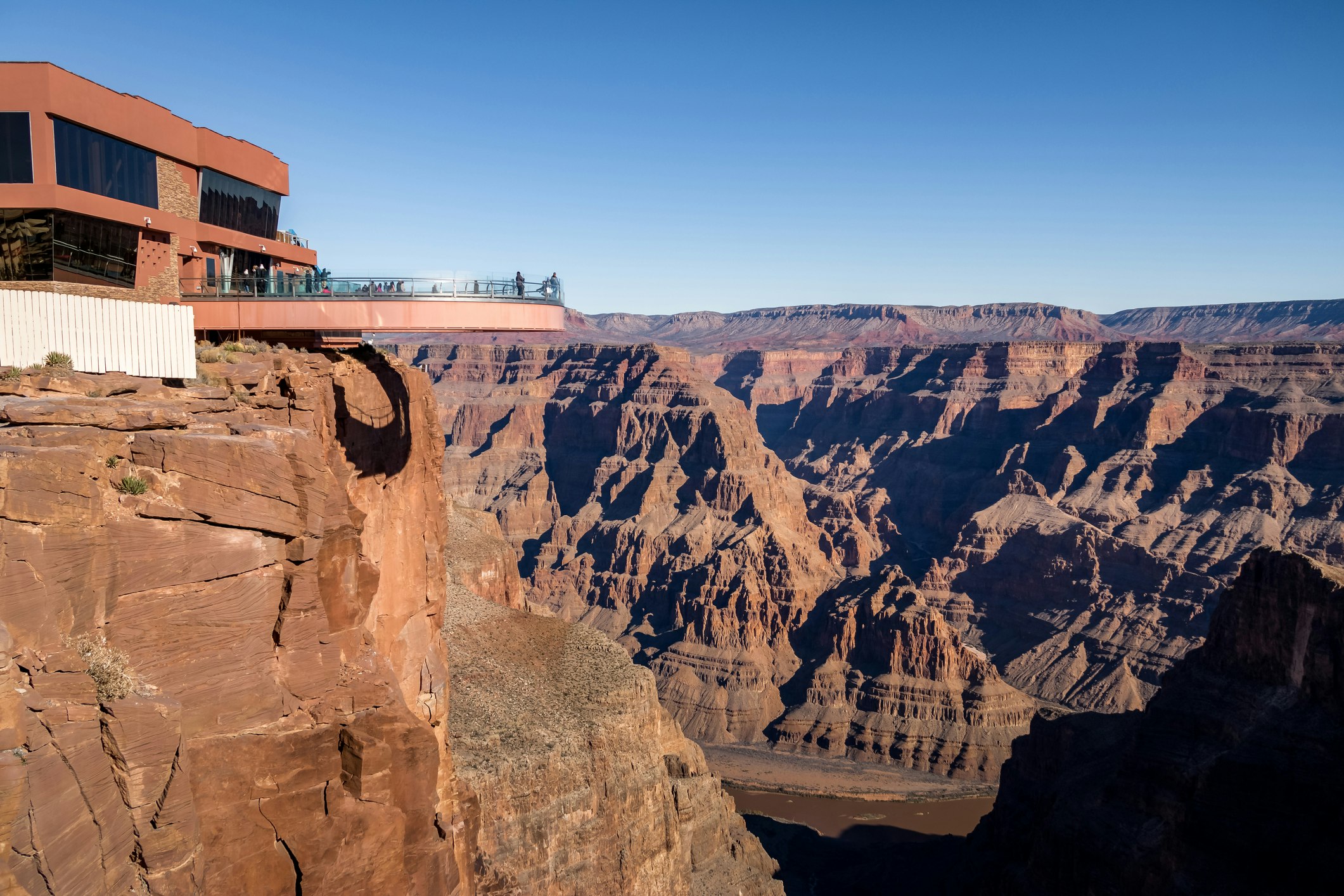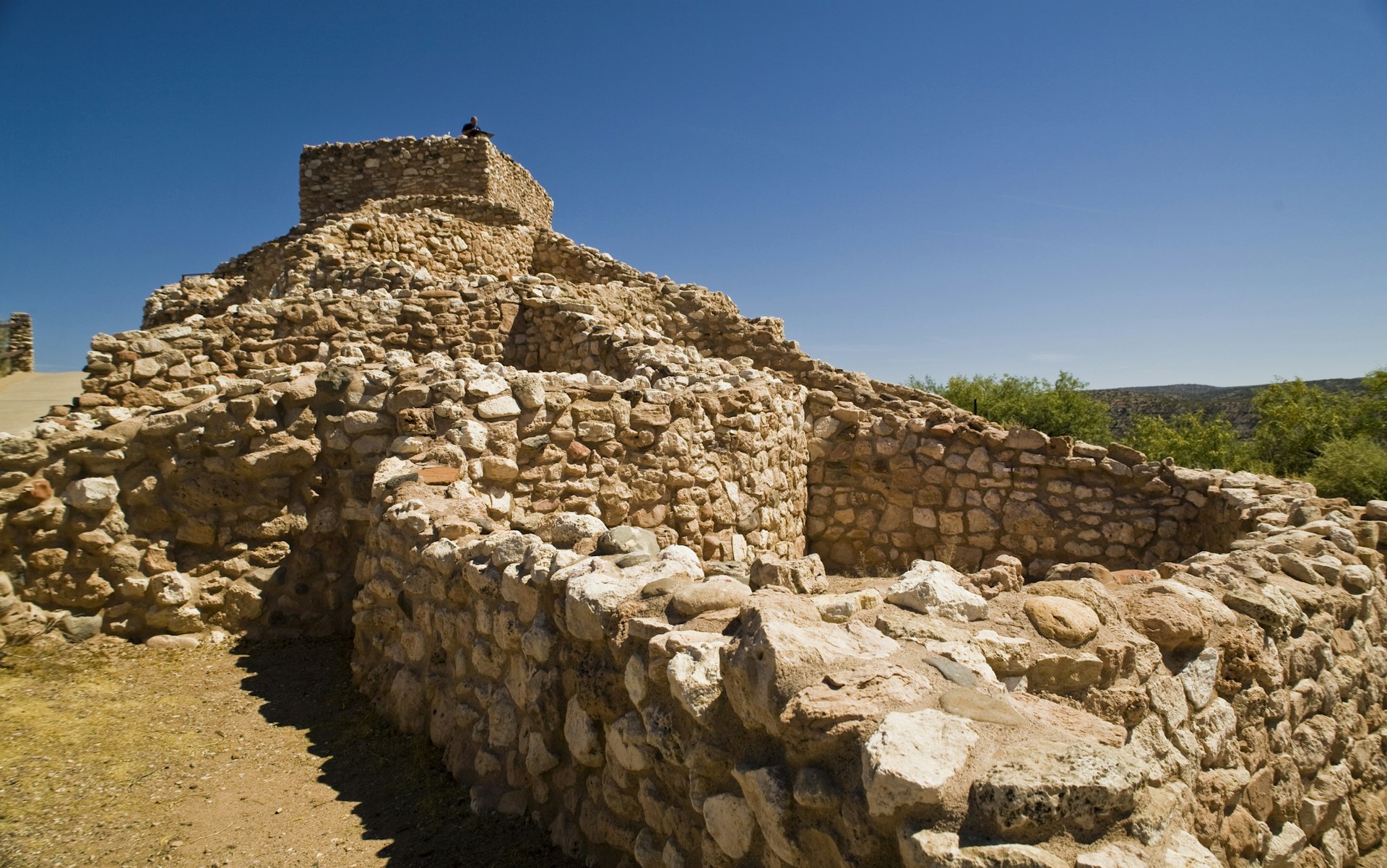Arizona has its icons of the American West, but the Grand Canyon State has more layers than you might expect.
This place is not just desert – it has a trio of distinctive wine-producing regions and the first international dark sky community, and it’s where Pluto was discovered. Where else can you ski just an hour away from stands of saguaro cacti? In Arizona, you’ll find everything from hidden hot springs and prehistoric cave dwellings to Frank Lloyd Wright’s organic architecture.
These are the 13 best things to do in Arizona.
1. Take a hot-air balloon ride in Sedona
Exploring Sedona’s landscapes could take a lifetime. An electrifying way to see this desert city, set amid two million acres of the Coconino National Forest, framed by ancient red rocks and famed for its unspoiled beauty and mysterious vortexes, is on a hot-air balloon ride. Float above swathes of ponderosa pines and the crests of sandstone landmarks such as 5000ft Cathedral Rock, Sedona’s most photographed site.
Planning tip: Balloon trips take off before dawn, so early risers can witness the desert stirring to life. Mornings are also prime time for photography. Trips run year-round. If you go in winter, you might even see the desert dusted in snow.
2. Look into galaxies far, far away at Lowell Observatory
Lowell Observatory in Flagstaff has a cool claim to fame. In 1930, its astronomers were the first to discover Pluto. In 2001, Flagstaff became the world’s first international dark sky city (one of five in Arizona).
At the observatory, get schooled on a universe of discoveries during guided tours such as Mars Hill, which takes visitors back to 1894 when Percival Lowell founded the observatory. Check out the Pluto Discovery Telescope and the 124-year-old, 24-inch Clark Refractor that Lowell first used to study Mars. Peer into space through six state-of-the-art telescopes on the Giovale Open Deck Observatory.
Planning tip: You’ll have to wait until 2024 to visit the Kemper and Ethel Marley Foundation Astronomy Discovery Center. When complete, the 40,000ft structure will be another place to experience night-sky wonders.
3. Learn about the area’s prehistoric people at Tuzigoot National Monument
Remnants from Arizona’s prehistoric people have been well preserved throughout the state. At Tuzigoot National Monument in historic Clarkdale, you can actually walk inside a 110-room pueblo. Built by the Sinagua people 1000 years ago, the pueblo sits on a small hill overlooking the Verde River. Inside the visitor center is a small museum with artifacts unearthed from the pueblo, such as textiles, ceramics and tools.
Planning tip: Your visitor pass for Tuzigoot can also be used at Montezuma Castle National Monument within seven days.
4. Taste the grapes along the Verde Valley Wine Trail
Wine production might seem out of place in Arizona, but the Jesuits planted grape vines here in the 17th century. The state has three distinct wine regions. Two located in the south, Sonoita and Willcox, have the coveted American Viticultural Area (AVA) designation. The Verde Valley in central Arizona’s mile-high desert is aiming to earn its own geographic pedigree. The region is ripe for discovery on the Verde Valley Wine Trail.
More than 25 wineries and tasting rooms have cropped up in the historic cities of Jerome, Clarkdale, Cottonwood and Cornville. These communities are coaxing an impressive range of grapes out of the rocky limestone soil. Expect to taste wines made from chardonnay, riesling, Malbec and Tannat, a red wine grape from Europe’s Basque region.
5. Find quiet at the North Rim of Grand Canyon National Park
There’s nothing overrated about 1.2-million-acre Grand Canyon National Park. If you’ve already visited the South Rim or are seeking more solitude and cooler temperatures, a trip to the North Rim is essential.
A network of trails offers panoramas of the mile-deep canyon’s vast and varied rock formations. There’s no village shuttle like at the South Rim, but that means plenty of scenic drives, such as Point Imperial, the park’s highest spot at 8803ft, which overlooks the Painted Desert.
Planning tip: The North Rim is open only from May 15 to October 15. From mid-October to December 1 (or as soon as snow closes the highway), you can visit the North Rim during the day.
6. Hit the country’s southernmost slopes at Ski Valley
Snow sports in the desert? The southernmost spot for skiing in the US is just 45 miles from Tucson. Set atop 9157ft Mt Lemmon, Ski Valley is both a winter playground and summer retreat from southern Arizona’s area’s triple-digit temperatures.
In 1881, Sara Plumber Lemmon made her inaugural ascent of her namesake peak on foot and by horse. Thankfully, you can ride the chairlift to the top to cruise 21 runs crisscrossing 200 skiable acres or hike the trails in summer. Watch for wildlife such as coatimundi and Mexican spotted owls.

7. Walk among cacti at Saguaro National Park
Although you can see saguaro cacti in much of the Sonoran Desert, it’s an almost alien-like experience to travel among the masses of armed giants in Saguaro National Park.
Take a mini road trip through the park (Cactus Forest Drive is paved, but Bajada Loop is not), passing stands of century-old saguaros, which can tip the scales at up to 8 tons. Hike the trails to get up close to these spiky sentinels. Look for limestone kilns on the Cactus Forest Trail and petroglyphs at Signal Hill, which were made by the Hohokam people in the 13th and 14th centuries.
Planning tip: Visit from April to June to see the cacti heads and arms decked in frilly white blooms.

8. Admire the architecture of Taliesin West
In 1943, Frank Lloyd Wright said, “Taliesin West is a look over the rim of the world.” The father of modern American architecture was referring to his so-called desert laboratory, built in 1937 in Scottsdale.
A National Historic Landmark, Taliesin West was where Wright lived and worked in the winter. It was also a campus where he educated his protégés and pushed the boundaries of organic architecture. Tour the rooms and landscapes to see the unusual (a bathroom made from sheets of aluminum) and ancient (boulders with petroglyphs) elements throughout the property.

9. Understand tradition on the Navajo tribal lands
Arizona’s fascinating indigenous heritage dates back 12 millennia. Learn about these ancient and modern people by touring the Navajo tribal lands. Antelope Canyon, located in the Lake Powell Tribal Park east of Page, is a sacred site to the Navajo people. The slot canyon’s sculptural walls lit up with shafts of sunlight are a major draw. Book an authorized Navajo guide to see the handiwork of millions of years of erosion while delving into the area’s cultural significance.
About 125 miles east of Antelope Canyon, Monument Valley Navajo Tribal Park straddles the Arizona–Utah border. Another dramatic landscape created by wind and water, its monoliths have been immortalized in movies since the 1930s. Joining a local tour is required to explore much of Monument Valley, which is called se’Bii’Ndzisgaii in the Navajo language. Experiences often include driving the 17-mile route among imposing buttes such as East Mitten and West Mitten and learning about Navajo traditions.
10. Hike the Arizona Hot Spring Trail
Hot springs, slot canyons, a 20ft waterfall near the Colorado River, volcanic rocks and an arch-shaped like the Liberty Bell are why people hike the strenuous Arizona Hot Spring Trail, which connects to White Rock Canyon and Liberty Bell Arch trails. The trailhead is just 4 miles from the Hoover Dam. Depending on which route you take, the hike is 5 to 6 miles, with a 750ft elevation change.
Planning tip: The hot springs are closed from May 15 to September 30.

11. Drive Route 66
The Mother Road (a term coined by John Steinbeck in The Grapes of Wrath) is legendary in Arizona, and for good reason. The original road from Kingman to Seligman is the longest uninterrupted stretch of historic Route 66 still in use. The highway travels through pastoral landscapes where eclectic towns give road-trippers a glimpse into the past.
Route 66 is a dose of Americana at its best: colorful and quirky, with oddities like the 14ft Giganticus Headicus outside the Antares visitor center. Make a pit stop at the historic Hackberry General Store (now a roadside museum) in its namesake village, and in Seligman get a cherry-dipped ice cream at Delgadillo’s Snow Cap.
12. Drink craft beer on the Flagstaff Brewery Trail
Flagstaff might best be known as the gateway to the Grand Canyon or for the Arizona Snowbowl’s winter terrain, but this mountain city has also become a destination for craft beer. Explore the Flagstaff Brewery Trail to taste what’s on tap at local spots, like Wanderlust, which elevates traditional brews to the next level: its Jasmine Terrace Rice Saison is made with puffed rice instead of wheat.

13. Be brave on the Grand Canyon Skywalk
Imagine seeing the base of the Grand Canyon beneath your feet while standing on a sheet of glass. Located in Grand Canyon West (not part of Grand Canyon National Park) on the Hualapai Indian Reservation, the glass-bottom Skywalk juts 70ft over the canyon’s west rim, curving in the shape of a horseshoe. The cantilevered bridge is just 10ft wide, but it can hold weight equivalent to 70 fully loaded 747s.
Planning tip: Outside food or drink are not allowed. You can snap selfies at Eagle Point before you get on the Skywalk, but photography is not allowed on the bridge. Free lockers are available for stashing your stuff.
